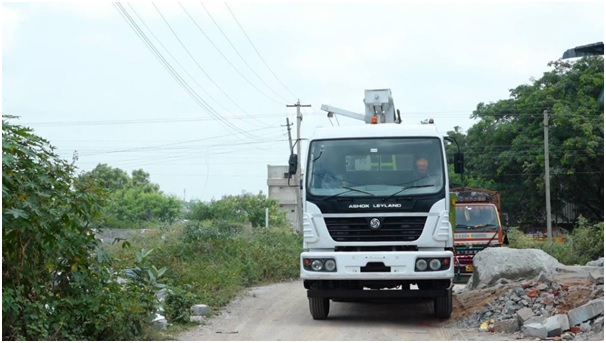What Should You Know about Borehole Drilling Machines?

Have you ever explored drilling machines? Like any other types of machines, these have their value too. Experts use these machines to reach deep underground to get minerals, water, or even oil. Varied kinds of projects ask for different machines because the land, soil, and even depth are not the same everywhere. There are many types of borehole drilling machines, and each one is constructed for a special purpose. Once you do know about these machines, you can be at a better place to choose the right equipment for proper, safe and effective work.
Rotary Drilling Machines
Have you ever heard about rotary drilling? Well, it is one of the commonest types. These machines make use of a rotating drill bit to get through soil and rock. You can find them to be immensely productive and effective for performing deep drilling because the rotating action can move efficiently in softer soil and even break harder rock with additional pressure. This kind of machine is most of the times chosen for water wells and oil exploration.
Percussion Machines
This is the type that acts differently from rotary drilling. Instead of rotating, it simply breaks rock and soil by simply hammering down repeatedly. The bit strikes with quite heavy force, crushing the material beneath. Percussion machines are somewhat sluggish, but they can manage very hard rock where rotary drills might get simply stuck. They are good and effective for deep and robust formations.
Auger Machines
Auger machines make use of a spiral-shaped tool that somewhat appears like a big screw. As it turns, it carries soil to the surface. These machines are perfect for soft soil, clay, and even sand. They are not perfect for deep or hard rock drilling but are immensely useful for shallow wells, farming projects, and even soil testing. They are pretty light, easy to use, and inexpensive compared to heavy drilling machines.
Down-the-Hole Machines
This sort of drilling machine combines both rotary and percussion technique. Hence, it makes it very powerful and efficient. The procedure of hammering gets executed directly at the bottom of the hole. Yes, it is near to the drilling bit, instead of traveling through the whole drill pipe. Because of this design, very little energy gets lost, which makes the entire process faster, stronger, and even more accurate. It acts especially well in hard rock formations where other machines may simply struggle. For this reason, it is extensively chosen for mining, construction, and even deep drilling projects.
Top-Hammer Machines
In top-hammer drilling, the hammering movement is applied from the top of the drill string. The force move down the road to the bit. These machines are great for medium-depth drilling and get used in both mining and construction. They work better in smaller holes in comparison to very deep wells.
Cable Tool Machines
It is the type of drilling machine that is one of the oldest and most conventional designs used for making boreholes. It acts by repeatedly dropping a hefty, chisel-shaped bit into the ground. It breaks soil, rock, and even other underground layers through constant impact. After the material gets crushed, it gets removed from the hole with the assistance of a tool known as a bailer. Although cable tool machines are sluggish in comparison to modern drilling equipment, they stay dependable in certain regions, especially for water well projects. Their design is simple, convenient to operate, and does not really need huge amounts of fuel or power. All this make them a practical option in remote or low-resource zones where advanced machines may not be simply available.
Hydraulic Machines
These machines employ fluid pressure to run their parts. They are robust and can drill deep into the ground. These machines are pretty more advanced and provide better control, and all this makes them apt for professional use in big projects. Their high efficiency makes them pricy, but they decrease human effort and enhance speed. In addition, they are loved for durability, which means they can manage long drilling operations without frequent breakdowns. With good and proper care and skilled handling, they can offer consistent performance for manifold years.
Air Drilling Type of Machines
Air drilling machines are the ones that do work by using compressed air to clear the hole during the procedure of drilling. Instead of depending on water or mud to flush out the cuttings, a robust stream of air pushes the broken material out of the hole quickly and even effectively. This technique is especially useful in dry regions in which water is limited or not really available at all. It even performs well in hard rock formations because the air not just removes debris but also helps keep the drill bit cool, decreasing wear and damage. However, air drilling does accompany some limitations. In loose or unstable type of soils, the air pressure can trigger the walls of the hole to collapse. Hence, it makes it less apt for those conditions.
Horizontal Drilling
Most drilling machines are there that work vertically, but horizontal drilling gets used when a straight-down approach is not possible. These machines do drill sideways underground. They are useful for laying pipelines, cables, or even water channels under roads and buildings in the absence of disturbing the surface. Horizontal drilling demand advanced technology and is more complex than any type of simple vertical drilling.
Portable Drilling Machines
These machines are smaller and easier for anyone to move. You can easily carry them to any type of places where big machines cannot go. Farmers, small contractors, and even field workers most of the times use these machines because they are inexpensive and even more flexible. Portable models may not simply go very deep, but they are good and practical for shallow boreholes and even small projects. You would not face any trouble in taking them with you when you have to perform tasks at some other place.
Conclusion
So, it is clear that a drilling rig machine is more than simply heavy equipment; it is the mainstay of projects that need access to underground water, minerals, and even energy. Each type of machine is specifically designed with a purpose, and understanding the differences assists in making better choices.



